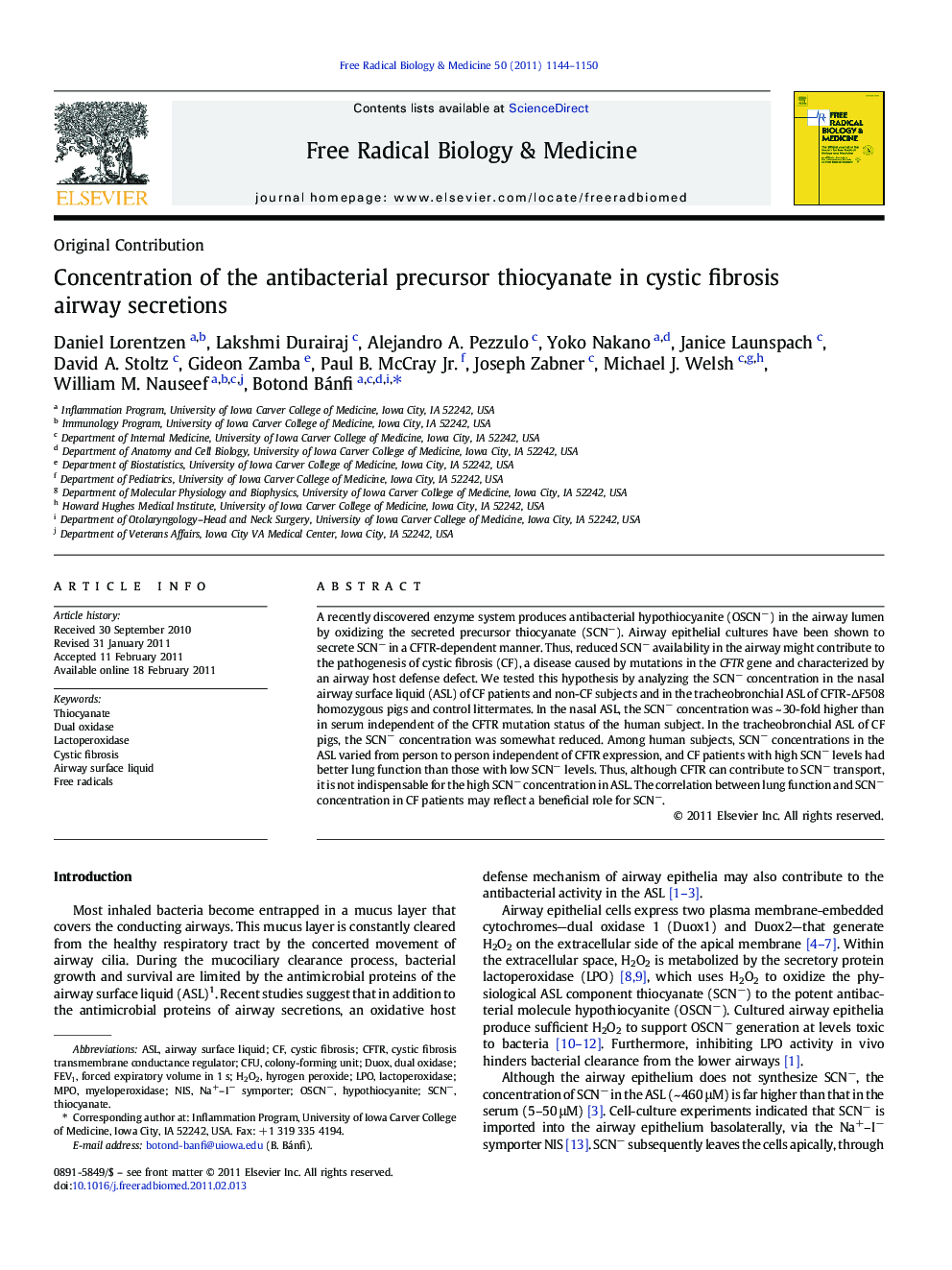| Article ID | Journal | Published Year | Pages | File Type |
|---|---|---|---|---|
| 10738435 | Free Radical Biology and Medicine | 2011 | 7 Pages |
Abstract
A recently discovered enzyme system produces antibacterial hypothiocyanite (OSCNâ) in the airway lumen by oxidizing the secreted precursor thiocyanate (SCNâ). Airway epithelial cultures have been shown to secrete SCNâ in a CFTR-dependent manner. Thus, reduced SCNâ availability in the airway might contribute to the pathogenesis of cystic fibrosis (CF), a disease caused by mutations in the CFTR gene and characterized by an airway host defense defect. We tested this hypothesis by analyzing the SCNâ concentration in the nasal airway surface liquid (ASL) of CF patients and non-CF subjects and in the tracheobronchial ASL of CFTR-ÎF508 homozygous pigs and control littermates. In the nasal ASL, the SCNâ concentration was ~Â 30-fold higher than in serum independent of the CFTR mutation status of the human subject. In the tracheobronchial ASL of CF pigs, the SCNâ concentration was somewhat reduced. Among human subjects, SCNâ concentrations in the ASL varied from person to person independent of CFTR expression, and CF patients with high SCNâ levels had better lung function than those with low SCNâ levels. Thus, although CFTR can contribute to SCNâ transport, it is not indispensable for the high SCNâ concentration in ASL. The correlation between lung function and SCNâ concentration in CF patients may reflect a beneficial role for SCNâ.
Keywords
Related Topics
Life Sciences
Biochemistry, Genetics and Molecular Biology
Ageing
Authors
Daniel Lorentzen, Lakshmi Durairaj, Alejandro A. Pezzulo, Yoko Nakano, Janice Launspach, David A. Stoltz, Gideon Zamba, Paul B. Jr., Joseph Zabner, Michael J. Welsh, William M. Nauseef, Botond Bánfi,
